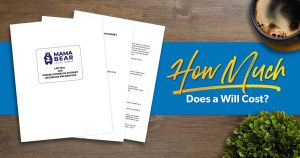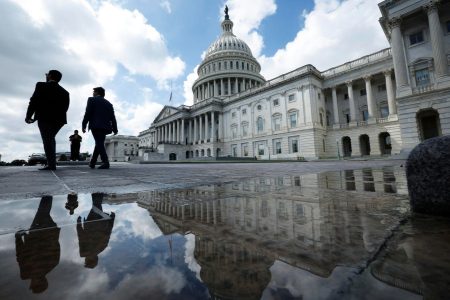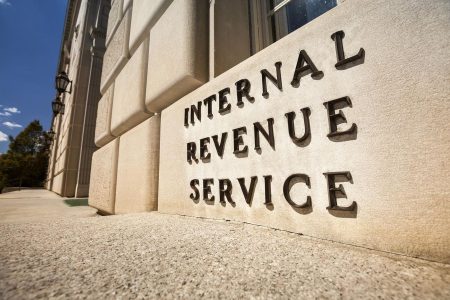Monte Jackel of Jackel Tax Law discusses partnership taxation rules and the role they play in former President Trump’s ongoing IRS audit.
This transcript has been edited for length and clarity.
David D. Stewart: Welcome to the podcast. I’m David Stewart, editor in chief of Tax Notes Today International. This week: the problem with a president’s partnership.
Former President Trump’s taxes have gotten a lot of scrutiny over the years, and they’ve landed back in the spotlight with a recent article from ProPublica and The New York Times. The article, which we’ll link to in the show notes, takes a look at the IRS’s audit of Trump’s taxes.
Our guest this week, who also weighed in on the ProPublica-New York Times article, will help break down the technical issues behind Trump’s previous tax maneuvers. So joining me now to talk more about this is Monte Jackel, the principal of Jackel Tax Law and the graduate tax program scholar in residence at the University of Baltimore School of Law. Monte, welcome to the podcast.
Monte A. Jackel: Thank you. Glad to be here.
David D. Stewart: Now, one thing before we begin: Monte did work at a firm who previously represented Trump, but he had no involvement in that case. Similarly, he worked for the IRS Office of Chief Counsel during the time of some of these proceedings, but he had no involvement there, either.
So Monte, let’s start with an overview of what was going on here. What’s been reported on this situation with Trump’s Chicago Tower?
Monte A. Jackel: The Times and ProPublica story, which I believe initially ran on May 11, the banner headline was that Trump was double-dipping — using the borrowed money from the Chicago Tower project to both claim a worthless partnership interest deduction as well as to reuse the same basis again by some accounting maneuver, as they called it. So that is the gist of the overall picture of what they were writing about.
The basic idea of the concept, so we can just keep this in context, was I just come up with a simple example. If a taxpayer has an outside basis, and its basis in his partnership interest source, sometimes called outside basis, of $100; a share of inside basis of $100; and if the interest was initially worth $100 and the entire basis is due to partnership nonrecourse borrowing, so there’s no equity — I know it’s not realistic, but it makes the point — if the interest, partnership interest, then becomes worthless and a $100 loss is claimed, what it comes down to is if worthlessness is not a disposition of section 1001, which we can discuss in a bit, the taxpayer — in this case, Trump — would be left with an interest, partnership interest, with a zero outside basis in the partnership interest, no fair market value, but inside basis is still remaining $100. And that’s based on the theory that you took the deduction for basis, including the nonrecourse debt, and that allowed you to claim the loss and using the debt basis for that without recognizing either the sales gain or [cancellation of debt (COD)] income because it’s not a disposition on the section 1001.
Anyway, that’s the position that the taxpayer undoubtedly took. Can’t tell that from the 2019 guidance that the IRS released, which was on a partnership merger transaction, which I’ll describe in a bit. But the gist of it is that the merger transaction was supposed to provide basis — additional outside basis — to deduct the high inside basis that still remained after the worthlessness deduction.
If worthlessness was a disposition under section 1001, there would be no net gain or loss on the transaction. And what happened here — although, again, none of these facts have come to light from reading the 2019 [internal legal memorandum], I believe — but it’s candidly the fact that in 2008 the worthlessness deduction was claimed, the statute of limitations ran on 2008, then in 2010 the merger transaction occurred. At the time the IRS got around to examining and writing up partnership merger transaction, at that time the statute of limitations on the 2008 loss had expired.
And so the gist of the story by the reporters based on the documents they had — they weren’t reviewed by me or anyone else; the reporters just furnished some facts, asked some questions in emails, had a few discussions, and that is about it. There were two practitioners quoted in the story: myself and professor Walter Schwidetzky of the University of Baltimore. But the idea is that somehow Mr. Trump — who’s not identified, of course, in the IRS guidance but is identified in the New York Times-ProPublica story — is portrayed as someone who took an unwarranted loss and then is looking to use the tax basis a second time.
David D. Stewart: OK, so let’s get into some of the details of how this appears to have happened. This idea of worthlessness of the partnership, how is that supposed to work? This would’ve been what happened back in 2008.
Monte A. Jackel: Just a little background. The law used to be, at least how the IRS viewed it, that you needed an event of either abandonment or worthlessness at the partnership level in order for there to be a loss, that the IRS didn’t recognize initially any transaction at the partner level. But then, in a very significant case from the Fifth Circuit called Echols, it was determined that events at the partner level can determine whether or not there’s a loss with respect to the partnership interest and that, at least in part, the subjective determination by the taxpayer of worthlessness is a very significant factor in evaluating whether it’s timely to take the deduction. It is not necessary to prove that the partnership interest has absolutely zero net value, which is actually the holding of the court, although it was stipulated that the loss was a capital loss that the partner obtained, which doesn’t make sense unless the partnership interest being worthless was not a disposition. But that’s not discussed in the case, as we will see.
But the IRS does not like to cite Echols, the Fifth Circuit opinion in Echols, because of the fact that it gives significant weight to subjective determination by a taxpayer on worthlessness. Otherwise, there’s a lot of background case law pertaining to worthlessness and abandonment, and there’s a very good article — a background article in Tax Notes Federal a couple months ago by, again, professor Schwidetzky, who did a good job summarizing the background authorities — which is a good look because it tells you that things need to be going not great, but you don’t necessarily have to sit there and prove that you wouldn’t get a nickel out of it. And so worthlessness is very difficult to determine.
The worthlessness deduction in this case was not challenged because the statute ran. And in addition, I would hope if the statute had not run, the IRS would’ve at least examined that 2008 return where the loss was claimed, and in addition to examining worthlessness as an issue, would have dealt with using the debt basis as part of the loss, which should not have happened on the merger transaction itself.
Where the IRS — in my view, at least, then, and continuing now — distorted the application of the applicable rules and regulations [was] in coming to a conclusion that in the assets-over merger transaction — where the assets are treated as going from the terminating partnership to the surviving partnership in exchange for an interest in the surviving partnership, which is distributed to the partners of the terminating partnership, and then the terminating partnership liquidates — that that transaction, the deemed distribution, is in fact a distribution, a sale or exchange, or actually an exchange, for purposes of 743(d) like in “dog,” the substantial built-in loss provision, which, had it been applicable — and the IRS is saying it does apply — would have the effect of negating the high inside basis of the partnership interest to bring it back down to zero, or close to it.
So in the simple example that I gave of $100 basis inside and outside and then a loss is claimed using the debt basis, the inside basis remains $100 because there’s no provision that says the inside basis needs to be reduced. But then two years later the merger transaction occurs, and at that point in time there would be a negative 743(d), if it applied, of $100, and so inside basis would then once again become zero. And though the IRS would not like the fact that the use of the basis was accelerated to an earlier point in time than it should have been taken, it still would be better than claiming the loss, not being able to go back and examine the loss and take it away, and then have to come up with a convoluted theory to come up in the 2019 guidance to reverse the effects of a transaction in 2008 they should have audited but didn’t.
David D. Stewart: I do want to take one quick step back, and just so that we can clarify for listeners the difference in concept between outside basis and inside basis. Why are these concepts separate, and how do they function in practice?
Monte A. Jackel: A partnership, in this case much like the corporation, the real owners have a tax basis in their interest in the entity. So for purposes of many provisions in subchapter K, a partnership is an entity and not an aggregate of its partners for purposes of determining gain or loss on sale of the interest or the amount of losses you can have allocated to you from a partnership without recognizing income. Shareholders have basis in their shares of stock. And then the aggregate component of it is the inside basis, where that’s the basis the entity has in its assets so that if it sells them, distributes them, borrows against them, etc., just like the corporation would, the tax basis of those assets are what they are at the entity level. And there can be a divergence of what basis is on the outside versus what’s basis inside, depending upon certain transactions partners may have with each other or with the partnership.
Basically — I mean, the classic one where you get a difference in result and with outside/inside basis would be where an individual buys a partnership interest from an existing partner and it’s a gain interest and there’s no section 754 election to adjust basis. And in that case the outside basis would be high and the inside basis would be low due to the fact the assets appreciated. That’s the purpose of the 754 election. But inside/outside basis can diverge.
And what was happening in this case is the IRS inadvertently allowed an inside/outside basis disparity by allowing outside basis to go to zero and keep an inside basis remain high, or whatever it was before the transaction started. And at that point in time the taxpayer would need more outside basis — basis in the partnership interest, for example — to deduct more losses. And that could be accomplished by a new equity contribution, borrowing more money, or perhaps a partnership merger where if you do an assets-over merger, you’ll end up with the surviving partnership, which would have a basis in its interests that are distributed, that would reflect without the 743(d) result the government would try to impose in the guidance, would retain the high basis of the assets before the transaction started, or would obtain basis from other assets in the surviving entity that they would obtain. And so I suspect, although it’s not explained, that was at least one reason for the merger.
Initially, when the loss was taken, if that was all that was happening and the basis of the assets inside the partnership were all very low, nothing would’ve been accomplished by doing the merger. But in obtaining a merger — particularly if you have a lot of cross-ownership, as I think was the case for Mr. Trump, meaning that he would be a partner in several of these partnerships — that he would have basis that would be usable once you did the merger against the losses that still remain inside the terminating partnership that then get moved over, or the basis gets moved over, to the surviving partnership.
To the government, that was a no-no. To the writers of the New York Times story and ProPublica story, that was an accounting gimmick. I’m just an innocent bystander, and I’m just observing that there is something that’s going on. What I didn’t like about the guidance on the merger was I just felt it was a very strong-willed attempt to misapply the applicable rules and regulations in order to get a negative adjustment to offset the fact the taxpayer took the basis too early, attributable to the nonrecourse debt in a now-closed year.
And so when you put yourself in the role of a practitioner where the law is unclear, like worthlessness — whether it’s a disposition or not under section 1001 is not addressed in any authoritative guidance, meaning it’s not an abandonment when you’re giving up the beneficial ownership in the asset. It’s not a sale. It’s not an actual exchange like a 351, or a reorganization. You just say the interest is worthless. And if you can prove it, the basis of the asset after you claim worthlessness is zero, or close to it; the value of the interest is zero, or close to it. And that’s the economic equivalent of a sale.
And yet there’s no authority that says it is a sale or other disposition if you just claim worthlessness. In point of fact, there’s some case law that says that if under state law you remain liable on a partnership borrowing, that even though you’re no longer a partner under state law, you still have a share of the debt for federal income tax purposes. And so the argument is made that that means that you haven’t disposed of the asset, so the debt’s not included in the amount realized or part of COD until later, unless you die first. But you use the basis early, before it was taken into account by either sale or some other exchange or distributions or loss allocations. So when you look to see whether any minimum gain, as they call it, was created at the partnership level or any other use was made of the basis in the tax system, that hadn’t occurred in 2008, and yet the deduction was taken.
But given the lack of authority saying whether it is or is not a disposition for 1001 purposes, meaning worthlessness, then what is a practitioner going to do with the fact that there’s at least some legal basis — I would think at least substantial authority, if not more — that worthlessness is not a disposition? If that’s the case, you get the result, at least in your first part of the result, that Mr. Trump in the story wanted to achieve. If a comparable situation was presented to any reputable partnership tax expert, it would be very likely that the expert would have very little opportunity to say no to using the debt basis.
And that blame, the blame for putting practitioners in that position, is the fact that the IRS and Treasury have not provided guidance in over 30 years on this issue. And they know about the issue, because in the main revenue ruling dealing with abandonments, partnership interest — Rev. Rul. 93-80 — worthlessness is mentioned in a simple sentence, saying that it’ll be treated the same as abandonment. But there’s no legal analysis of worthlessness in the revenue ruling; it’s just all about abandonment. And it’s a known issue, and it’s known for many decades.
And so who’s to suffer, bear the burden, when you have an unclear issue and there’s no guidance and practitioners applying the law aggressively, maybe too aggressively? The answer may be to change the law or to clarify the law by statute, which is one of the things I have recommended, and still do in terms of reforming the partnership tax law and subchapter K. But in order for a lot of these situations — and this is just one illustration of it — to be stopped, you need to have relatively clear-cut rules and a mechanism to enforce them.
I understand why the government acted the way they did in issuing the 2019 guidance, even though I believe it was incorrectly done. I understand the motivation for wanting to recover the basis that was used too soon in a now-closed year. But I also understand the position of the taxpayer — whether it’s Trump or someone else — who took advantage of the fact that there’s no clarity in the law and there’s a reasonable position on an issue and took the position.
Whether that conclusion is probably influenced, not technically as a matter of what practitioners are supposed to evaluate, because you’re not supposed to take the fact that the return may not be audited into account in evaluating the bona fides of a transaction, but still you need to recognize the reality of the situation that it’s going to be a known fact for at least a number of years audits of partnership — complicated partnership transactions — are not a frequent occurrence. They now may be — in fact, I hear are being — accelerated somewhat, but it’s going to take any number of years in order for that to be corrected. And in the meantime you’ll have situations like this.
I did write something, as I said, in 2019, where I gave my best shot at trying to understand this 2019 guidance, which created a negative 743(b) adjustment. But I just view the situation as unfortunate in the sense that there was no clear guidance telling a taxpayer who wanted to claim worthlessness that it should be treated the same way as an abandonment. There was a proposed Build Back Better Act — which never was enacted, of course — but there was a proposal to add a subsection M, like in “Mary,” to 165, which would’ve treated abandonment and worthlessness the same. Well, that was not enacted, and I think it needs to be.
And then there’s this whole question of what happens on merger transactions, things like this. There are a number of open issues with mergers and partnership mergers and other similar transactions. Passthroughs and Special Industries has had a lot on its plate dealing with the tax credits, and this has other burdens including estate tax, oil, gas, excise taxes. And it just seems that the job of the overall IRS chief counsel and IRS would be made a lot easier, more efficient, if partnership tax law had its own separate division. However, there’s nothing anywhere in any of the commentary about the IRS strategic operating plan or any modifications to it that says anything about changes to the organization of the IRS Office of Chief Counsel, which hasn’t occurred since the late ’80s, I believe.
And so this all comes full circle. I did not view this transaction in the paper — I view it as an aggressive transaction, but understandable, given the current situation. I wouldn’t put this in a category of some kind of tax evasion — tax evasion to mean either something is clearly wrong or most likely wrong. But if it’s something that’s debatable, even though you may lose in court, I don’t view that as evasion. It may be avoidance, or maybe just aggressive and good planning, or maybe just aggressive but not good planning. Point is that there are gaps in the accuracy-related penalty provisions — 66, or section 66, 62, and so on — which have not been amended since the law was changed in 1997, changing the principal purpose of tax avoidance in the regs to a significant purpose. And so you have that environment, as well, facing everyone out there trying to do things as best they can.
And then there’s the — I would be remiss in not mentioning the partnership antiabuse rule, which is in Reg. 1.701-2, of which much fanfare was made of it in 1994, 1995, when it was first issued. I did an analysis in Tax Notes with two of my former colleagues at Akin Gump, Alison Chen and James Maynor, and it had a study for over 20 years of the case law that has come out under the regulation. And at least up to this point in time, the regulation hasn’t accomplished something that you couldn’t otherwise accomplish by virtue of the common-law doctrines of economic substance or business purpose. And the main reason why that’s been the case, I think, is because the regulation is vulnerable to challenge on it lacking authority for the IRS after 50-plus years of silence and no new statutory provisions to say that was the intent of subchapter K, meaning what was then in 1.701-2, 40-plus years later after the ’54 code was passed.
And so that weakness has led to a lot of the inefficiency and ineffectiveness of the partnership antiabuse reg. If the partnership antiabuse reg, as part of partnership tax reform next year, if that was codified into a 701-type provision but to specifically authorize things like correcting for distortions created by literal application of certain rules, basis shifting without economic corollary to it, any regulations issued in response to that would have a lot more teeth and support than what it is today.
And that’s another thing, between that state of affairs and the fact that almost every antiabuse rule that’s now been issued as part of regulations over the last several years — and I counted at one point 194, it’s probably well over 200 now of regulatory provisions saying that something bad either in sub K or elsewhere, a principal purpose of which was to screw the government, that taxpayer loses without ever explaining what a principal purpose meant.
And the latest illustration of complaints by the outside bar about that situation was as part of these tax credit regulations, which I think in the 6418 regs dealing with transferability of the credit, [“[the IRS]”?] rejected requests by commentators to supply some objective analytical factors to take into account and determining a principal purpose to avoid, in that case some of the credit provisions. So the IRS refuses to explain that, is nebulous and vague, and that’s where we end up where we are. And when you have ambiguities in the law, this is what happens.
David D. Stewart: Now, do you have any hope for the future that these sort of issues will be addressed, that they’ll be able to close down these unwanted outcomes?
Monte A. Jackel: Well, I think that upcoming 2025 tax reform debate, as it’s called, is the next opportunity to actually adopt and enact meaningful partnership tax reform. But such reform would need to have both rules that would allow smaller-type entities — however you define small — but a system where stricter, more difficult rules to comply with are imposed, but only on entities over a certain threshold.
If you have that type of system, which is in effect some kind of two-tiered system, and have reasonable effective dates and transition rules like for transactions entered into on or after a certain date and not tied to tax for years so you can in effect start over once the transaction occurs and not have to look back to the beginning of time to see what would’ve happened — if you have those two guardrails that you meet, some reasonable rules to stop basis shifting, failure to revalue assets fairly, mandatory basis adjustments in a number of cases, perhaps some changes to the liability sharing rules and codifying antiabuse authority in regulations, we would be taking a big step forward without disrupting business generally. It would take away some flexibility, but the idea is that’s the trade-off, because if there’s too much flexibility built into subchapter K, you need a truly expert and significant — in terms of both number and smarts — [staff] inside the IRS to control it. And that won’t be the case for any number of years.
They’re starting now to push, but to me it means it can’t be done by auditing. It can’t be done just by regulation. And I don’t recommend issuing any regulations without statutory authority that tries to police things like inappropriate basis shifting. You need rules to deal with controlled taxpayers inside partnerships, and that would have to come from the statute since the IRS Office of Chief Council refuses to write regulations dealing with 482 as it applies to partnerships. They promised once to do so in Notice 2015-54, which was the pre-3721C regulation notice, but never followed up on doing it. And I don’t believe that leaving it to the government — meaning the IRS and Treasury — to just work it out in regulations without any statutory changes is going to — that would not be effective.
You could try to police the area through more effective auditing, smart auditing, smart examiners, but cases are going to be litigated regardless. It takes how many years — two to five years, maybe up to 10 years — to have a case scope from beginning to end to become precedent? How many years will it be until you have a coherent system of precedents now that the government is first starting the auditing process on some high-end partnership transactions? It’ll take forever.
So at the cost of some flexibility that’s currently built into subchapter K, which was one of the intended purposes in 1954, just my focus is people rely on the current state of the law in structuring their organizations and in structuring transactions. As long as you have a fair system for implementing new rules, don’t unduly burden those smaller-type entities that will not have the capacity to comply with that extreme burden, and you eliminate those, then I think you can improve the system. That and a combination of more effective auditing, and hopefully there’ll be some clarifications in this area. And I’m not making excuses for what happened, either in the New York Times story or elsewhere. It’s just probably the effect — not probably, surely just the tip of the iceberg in terms of what taxpayers all around are doing, both domestically and internationally.
David D. Stewart: Well, Monte, thank you so much for helping us understand what was going on here and giving us some idea of what to watch for in the coming years.
Monte A. Jackel: Appreciate it, appreciate it.
Read the full article here










